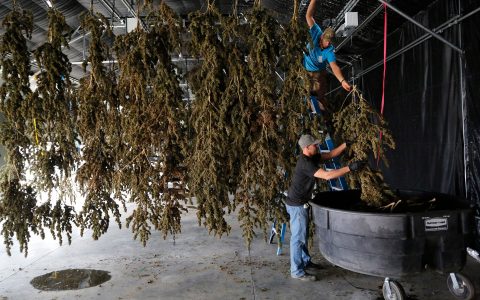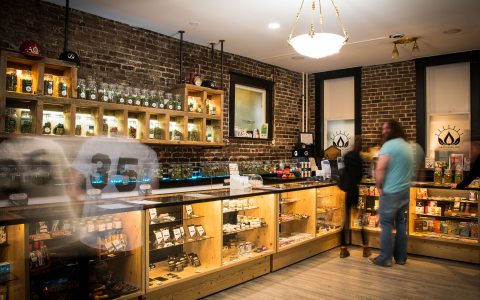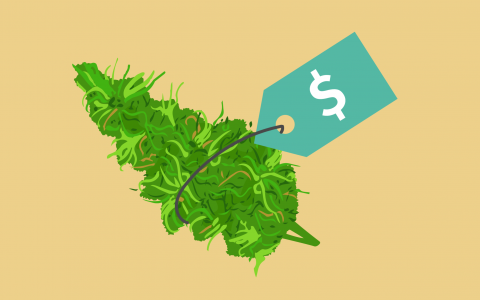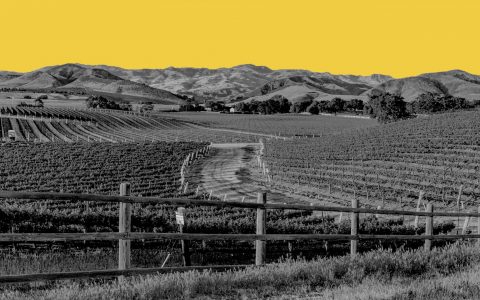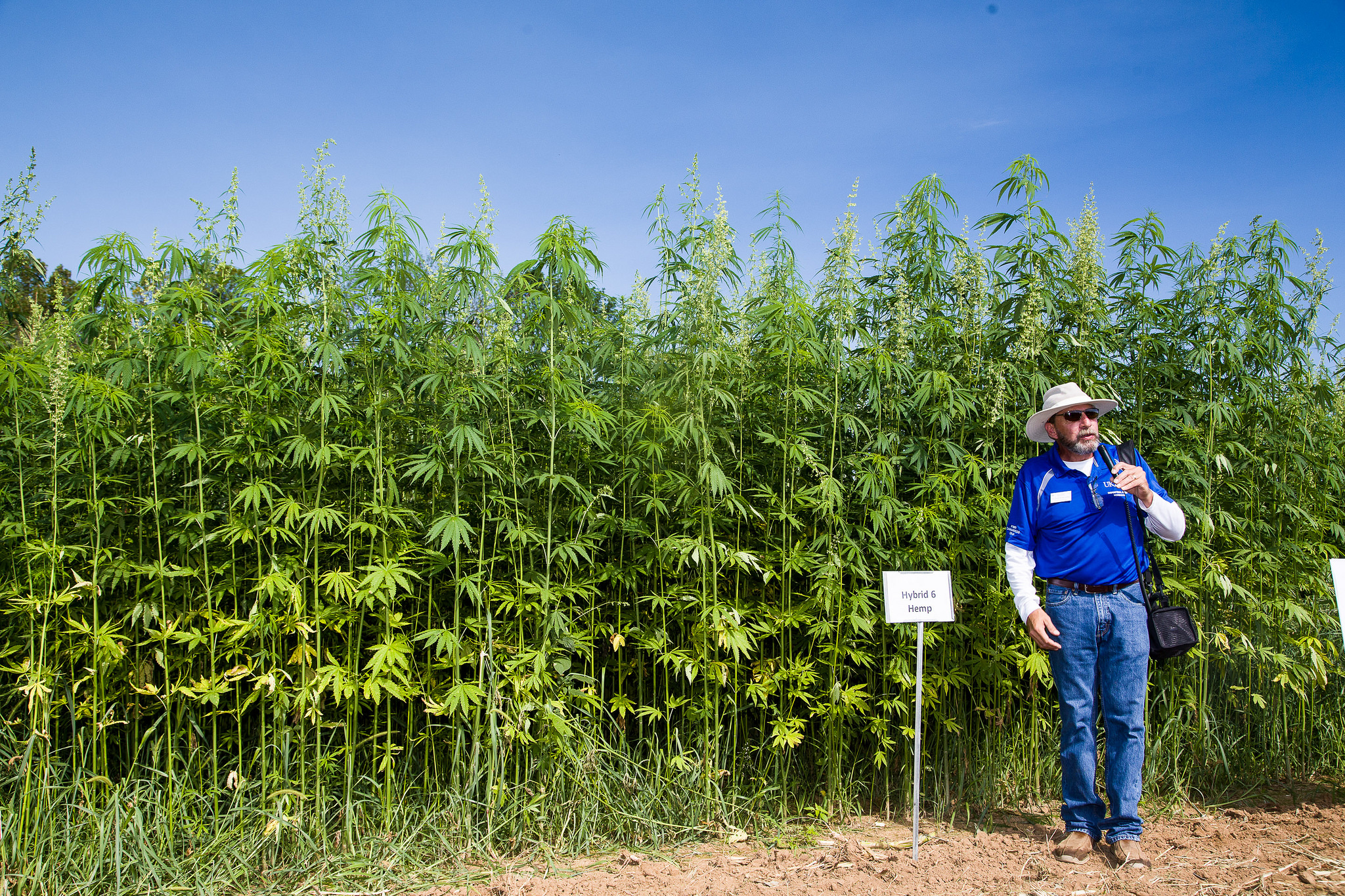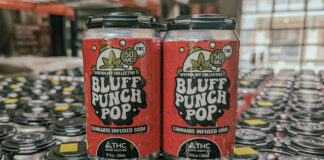You might not feel it yet, but the price of cannabis is crashing nationwide.
To see your future, just fly to Portland, OR, then take a Lyft to Floyd’s Fine Cannabis on NE Broadway St., and lay down $6 cash on the scratched glass display counter.
You’ll walk away with an eighth-ounce of Purple Punch in a little, black, plastic, child-resistant prescription pill bottle. It’ll feel like someone made a decimal error, and you won’t be able to contain your glee.
Eighth-ounces of grass used to cost as much as $60 under prohibition. In some parts of California, you can still find them as high as $100.
Legal pot would become so cheap, RAND predicted, that one day it would be given away like ketchup packets at a burger joint.
Since at least 2012, researchers have predicted that mature legalization prices would be one-tenth the cost of prohibition pot. In some markets, those days are finally here.
On Feb. 16, I bought an eighth in Portland called “Future”— a delicious, buzzy mix of GG#4 crossed with Starfighter. I paid $8.
Top-shelf eighths in Portland can be had for $18.
The bottom goes as low as $4 per eighth at Floyd’s, where business is booming.
Paying $6 for an eighth feels weird at first, but you quickly get used to it, and once consumers do, history shows they’ll never go back.
Why Legalization Prices Crash
Back in 2012, researchers at the RAND Drug Policy Research Center put out a book called “Marijuana Legalization: What Everyone Needs to Know.” It contained some startling findings.
RAND researchers calculated that 90% of the prohibition price of pot could be attributed to the so-called “risk premium”— the extra amount shoppers pay to cover the risk of arrest, fines, and prison for growers, distributors, and sellers.
This old risk premium, coupled with high demand, drove the price of cannabis to silly heights by the late ‘90s. A pound of dried, cured OG Kush from California went for $5,000 per pound. Eighths in college went for $60. That was the standard price. Today, illicit outdoor farmers report that they’re lucky to get $500 a pound. A pound contains 128 eighths. You do the math.
Legal pot would become so cheap, RAND predicted, that one day it would be given away like ketchup packets at a burger joint.
State-legal markets opened in 2014 in Colorado and Washington, followed by Oregon and Alaska. Today, ten states and Washington DC allow adults 21 and over to possess and consume cannabis. Seven of those states have licensed, regulated sales up and running.
Californians will tell you that legal prices rise after legalization, because of increased regulatory costs, coupled with limited legal supplies. But that quickly changes.
State licensing allows growers to switch from small-scale, hand-crafted, sometimes-medieval farming to automated, industrial agriculture.
This year, Oregon sits on a surplus of legal cannabis so big it’ll take Oregonians six and half years to smoke it all, according to the Oregon Liquor Control Commission. Oregon has about 1,000 licensed growers, with 1,200 more applications pending. Oregon licensees grew 2,000 tons of pot in 2018, and Oregon prices have fallen 36% since 2016.
Consequently, Portland’s $50 retail ounces have become the stuff of legend. Officials estimate about 55% of state smokers buy cannabis legally, instead of in the illicit market, because legal prices are so cheap. That stands in contrast to California, where an estimated 80% of consumers remain in the illicit market, due to high prices, taxes, and few legal stores.
The Best Bargain-Hunting in the US
Bargain-hunters will have a field day in Portland this year. We did a three-shop crawl of NE Broadway St. on a cold, wet Saturday, and left with our hearts soaring.
At the groovy dispensary Electric Lettuce, the tippy-top shelf Tangie Biscotti by growers Pruf Cultivar retailed for $48 per half-ounce out the door. We left with the tasty daytime sativa Pacific Juniper for $10 an eighth.
“We like to have something at every price point,” said Electric Lettuce’s manager.
Several blocks over at Floyd’s Fine Cannabis, banners outside advertised, “$5 Per Eighth | $40 Per Ounce | $2.50 Joints.”
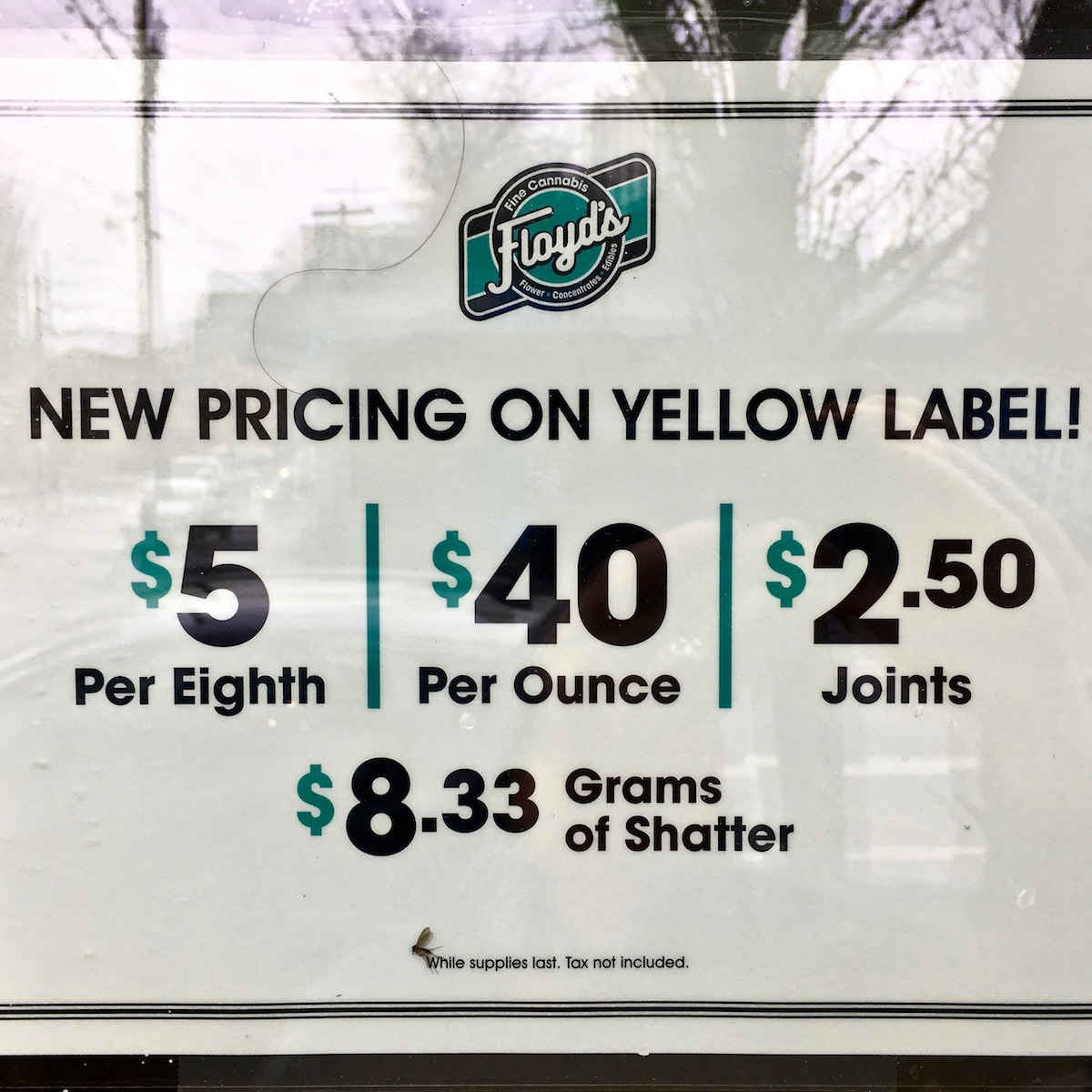 Sign of the Times: Floyd’s Fine Cannabis signage in Portland. (By David Downs)
Sign of the Times: Floyd’s Fine Cannabis signage in Portland. (By David Downs)
On the dimly lit sales floor, a line of seven customers snaked towards the counter. Floyd’s does high-volume, low-margin business to low and middle-income folks—like a liquor store. Young guys in dreadlocks and Nikes peeled off single $20 bills in exchange for their herb and change. Bags of ground up flower called “shake” hung from thumbtacks behind the counter — they went for $28 per ounce.
Further down NE Broadway St., across from a Goodwill thrift store, Happy Leaf had Jack Herer for $50 an ounce. Sure, you can still find cutting-edge, designer strains like Gelato Dosidos #4 for $35 an eighth, and Tangie Breath for $40 an eighth. But we couldn’t resist the “Future” at $10.
What About the Growers?
I asked the guy behind the counter at one store how the growers were doing with the surplus.
“It’s really bad,” he said. “It’s really bad.”
I asked him if it was true that licensed producers were selling cannabis into the black market to stay afloat.
“I shouldn’t be saying this, but—,” he said. Then he nodded ‘yes’.
The very first Portlander I had met, my Lyft driver from the airport, also said he was getting ounces “out the back door” for $25 from his “friend,” a licensed producer who sells into the adult-use market, where his ounces go for $50.
Medical patients and budget buyers especially benefit from cannabis’ price collapse. My Lyft driver broke his back in a motorcycle accident. He uses cannabis to manage neuropathy and related insomnia. He drives for Lyft to earn extra money for a new bike.
It’s fair to say several dozen or more Oregon cannabis farms will likely go bust this year, and the shakeout will continue. There’s one licensed cannabis farm for every 19 tokers in the state. There’ll be more closures and consolidation. Some farmers will grow more hemp, but prices won’t rise.
To help the industry, a new Oregon Senate Bill 582 lays the groundwork for Oregon to legally export cannabis to places that need it. The bill got a hearing Feb. 7. If it passes, the bill will be a nice gesture. But it won’t actually change anything. As long as federal prohibition remains intact, exporting cannabis across state lines is considered illegal interstate drug trafficking.
Cannabis’ Big Ag Future
In many respects, cannabis promises to follow in the footsteps of every other agricultural crop since the 1930s.
Industrialization and consolidation has driven the cost of food to near-historic lows. When America decides it wants to grow anything, we grow a butt-ton of it, and farms go bust. In 2019, non-cannabis farm bankruptcies are at a decade-long high—driven by overproduction of soybeans and Trump’s trade war with China.
According to the United State Department of Agriculture, Americans in 1960 spent 17% of their household budget on food. Today, we spend 6.7% of our household budget on food. Produce is plentiful and cheap. Cannabis is heading that way.
The downside of these savings are well-known — read John Steinbeck’s The Grapes of Wrath. Industrial mega-farmers minimize wages to maximize profits, and shunt off externalities like pollution and dried-up rivers.
Americans seem to have accepted this bargain. Both progressives and conservatives can’t resist a deal. Small-batch organic food thrives as niche agriculture, but niche it remains.
USDA Economic Research Service agricultural economist Annette Clauson explained it to NPR this way:
“We are purchasing more food for less money, and we are purchasing our food for less of our income. … This is a good thing, because we have income to purchase other things.”
Indeed, rolling up my first, enormous, guilt-free joint of cheap, Portland Purple Punch, I noted the cannabis’ aroma was weak, but the buzz proved serviceable.
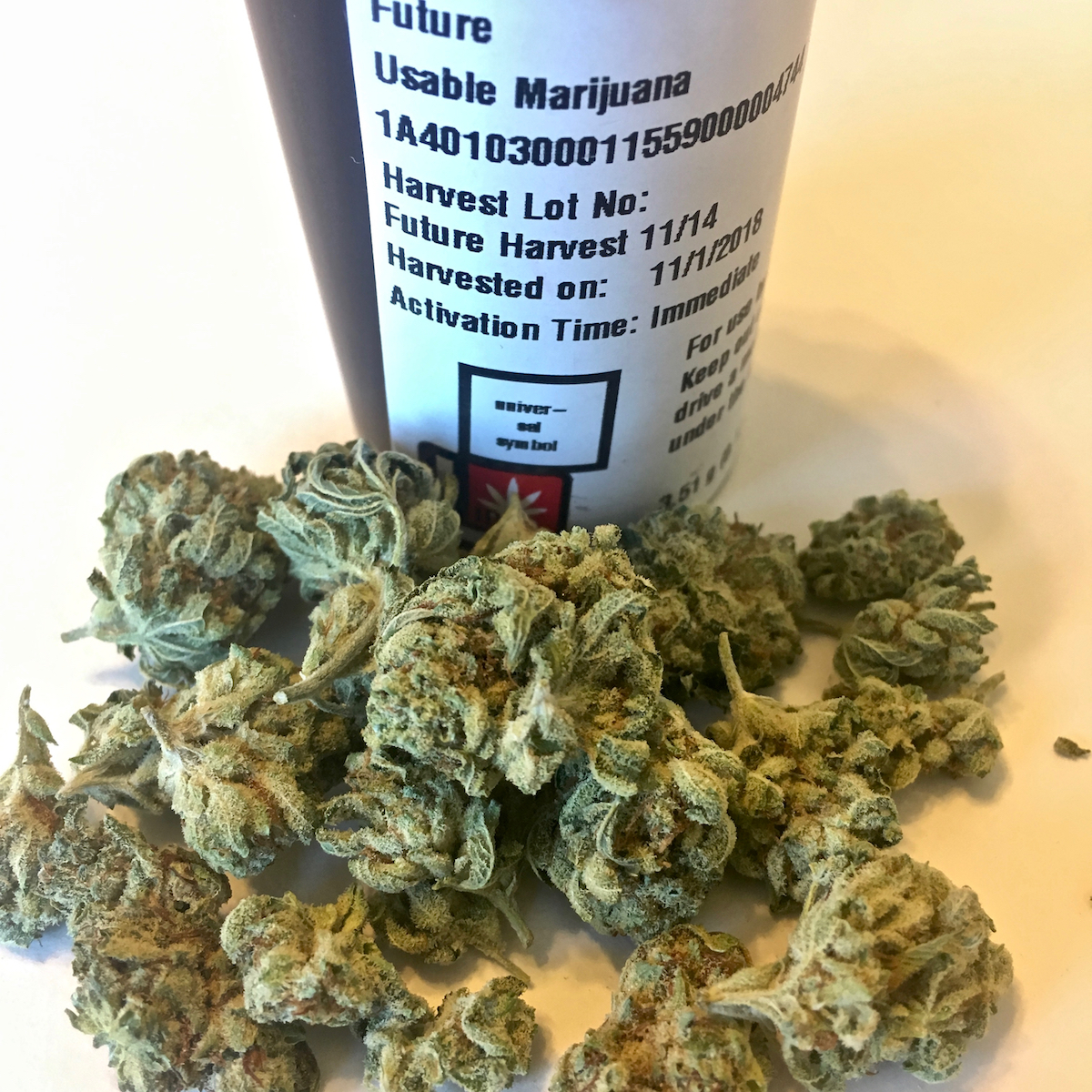 Future for $10 per eighth-ounce at Happy Leaf in Portland, OR. (By David Downs)
Future for $10 per eighth-ounce at Happy Leaf in Portland, OR. (By David Downs)
That $18 Tangie Biscotti eighth smelled, tasted, and felt truly divine.
Back in California, I wished I had stocked up. San Francisco’s standard $50 and $60 eighths now feel like a buzzkill.
You cannot un-see the future. Instead of wallowing in self-pity, I rolled the last of the Future up and smoked it—confident of the deals to come.
Portland Cannabis Bargain-Hunting Grounds
Dispensary – Advertised Deal
- Yesca – $60 ounces
- Floyd’s – $40 ounces daily
- MediGreen – $60/$75/$100 ounces
- Gras – $60 ounces
- Cannabliss – $75 ounces
- Electric Lettuce – $49 half-ounces
- Happy Leaf – $50 ounces
- Belmont Collective – $55 ounces
- Pakalolo – $60 ounces



